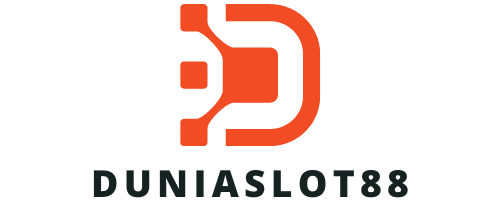Can AI and IoT Help in Creating More Responsive and Adaptive Urban Environments?

As our cities continue to grow and develop, the need for more efficient, sustainable, and smart urban environments is increasingly apparent. The integration of Artificial Intelligence (AI) and the Internet of Things (IoT) into urban management systems is showing great promise in creating responsive and adaptive urban environments. From traffic management to energy consumption, waste management to public safety, the convergence of AI and IoT is revolutionizing how cities function and thrive.
Leveraging AI and IoT for Effective Management of Urban Systems
As urban populations burgeon, the management of city systems becomes more complex and challenging. The traditional methods of urban management may not be sufficient to handle the scale and diversity of modern cities. This is where AI and IoT come into play.
In the same genre : How Can AI-Enhanced Smart Mirrors Transform Retail Fitting Rooms?
Incorporating AI and IoT technologies can make urban systems more responsive and adaptive, thereby promoting sustainability and enhancing the quality of life. AI, with its ability to analyze huge volumes of data and draw meaningful insights, can help city managers make more informed decisions. On the other hand, IoT devices, with their ability to collect real-time data, enable cities to monitor and control various aspects of their operations efficiently.
For example, AI can be used to predict traffic patterns, allowing city managers to optimize traffic flow and reduce congestion. IoT devices, such as smart traffic lights and sensors, can collect and transmit real-time traffic data, which can be analyzed by AI systems for better traffic management.
In the same genre : What Are the Breakthroughs in MicroLED Technology for Wearable Displays?
Sustainable Urban Environments through AI and IoT
The concept of sustainability is central to the development of modern cities. In this context, the application of AI and IoT can significantly aid in creating sustainable urban environments.
AI algorithms can analyze data from various sources to predict energy demand, which can help in efficient energy management and the promotion of renewable energy sources. For instance, Google’s DeepMind AI has been used to predict the energy output of wind farms, which has helped in increasing the value of wind energy.
Similarly, IoT devices, such as smart meters, can provide real-time data on energy consumption, which can help in optimizing energy use. Further, smart grids, powered by AI and IoT, can manage energy distribution more effectively, reducing losses and enhancing energy efficiency.
Harnessing Data for Smart Urban Development
Data is vital to smart urban development. AI and IoT, both being data-driven technologies, can play a pivotal role in harnessing data for urban planning and management.
AI can analyze vast amounts of urban data to identify patterns, trends, and correlations, which can provide valuable insights for urban development. For example, AI can analyze data on land use, housing, transportation, and demographic trends to help planners design more livable and sustainable cities.
IoT, with its capability to generate real-time data from various city systems, can provide a wealth of information for urban managers. For instance, data from IoT devices can help city managers monitor the health of infrastructure, track the efficiency of public services, and respond to emergencies more effectively.
Enabling Learning Cities with AI and IoT
We are now seeing the emergence of ‘learning cities’ – cities that are capable of learning from data and adapting to changing circumstances. AI and IoT are key enablers of learning cities.
AI, with its machine learning capabilities, can learn from data and improve its performance over time. This can help in creating urban systems that can adapt and evolve based on the data they receive.
IoT, on the other hand, can provide the continuous stream of real-time data that is needed for ‘learning’. As more and more city systems are equipped with IoT devices, cities are becoming ‘smarter’ and more adaptive.
In sum, the integration of AI and IoT into urban management systems holds great promise for creating more responsive and adaptive urban environments. By harnessing the power of data and the capabilities of these technologies, we can make our cities more sustainable, efficient, and livable. However, it is important to remember that technology is just a tool. The success of smart cities depends on how well we use these tools to serve the needs of their residents. As we move forward, we need to ensure that we use AI and IoT in a way that is inclusive, ethical, and sustainable.
Ensuring Environmental Sustainability through AI and IoT
In an era of global warming and climate change, the need for sustainable practices in all aspects of life, including urban planning and management, is paramount. This is where the integration of AI and IoT can be instrumental in ensuring environmental sustainability.
AI can assist in environmental conservation efforts in smart cities. For example, by using machine learning algorithms, AI can predict and analyze patterns in waste generation and management, facilitating the development and implementation of more efficient waste management systems. AI can also facilitate water management by analyzing patterns in water usage and predicting future water needs, thereby ensuring optimal use of this precious resource.
IoT sensors, on the other hand, can monitor environmental parameters such as air and water quality in real time, providing essential data for environmental management. For instance, IoT-enabled air quality monitoring devices can collect real-time data on air pollutants, enabling city managers to take appropriate measures to improve air quality. Similarly, IoT sensors can detect water leaks and wastage in city pipelines, enabling quick corrective actions.
Moreover, AI and IoT can together optimize green energy consumption. AI algorithms can predict energy demand, thereby managing energy production from renewable sources efficiently. IoT devices can monitor energy consumption in real time and control devices to reduce energy wastage. Together, these technologies can significantly reduce a city’s carbon footprint.
Conclusion: Realizing the Potential of AI and IoT in Urban Environments
In conclusion, it is clear that the convergence of AI and IoT technologies has the potential to revolutionize urban environments, making them smarter, more responsive, adaptive, and sustainable. Through effective data-driven decision making, these technologies can enhance the quality of life in urban areas, optimize resource use, and ensure environmental sustainability.
AI, with its capabilities in analyzing big data and making meaningful insights, can assist city managers in making informed decisions. It can facilitate urban planning by predicting patterns in housing, transportation, and demographic trends. IoT, through its real-time data collection capabilities, can provide invaluable data to monitor and manage various aspects of city operations.
‘Learning cities’, enabled by AI and IoT, can adapt and evolve based on real-time data, becoming more efficient over time. These smart cities not only ensure sustainability but also improve the quality of life for their residents.
However, it is crucial to remember that technology is a tool. The success of these smart city initiatives will depend on how effectively we utilize these tools to meet the needs of the urban population. As we progress, it is imperative to use AI and IoT technologies in a manner that is inclusive, ethical, and sustainable. The journey to creating smart cities that are truly beneficial to all their residents is a challenging one, but with thoughtful planning and careful execution, it is a goal that is well within our reach.
